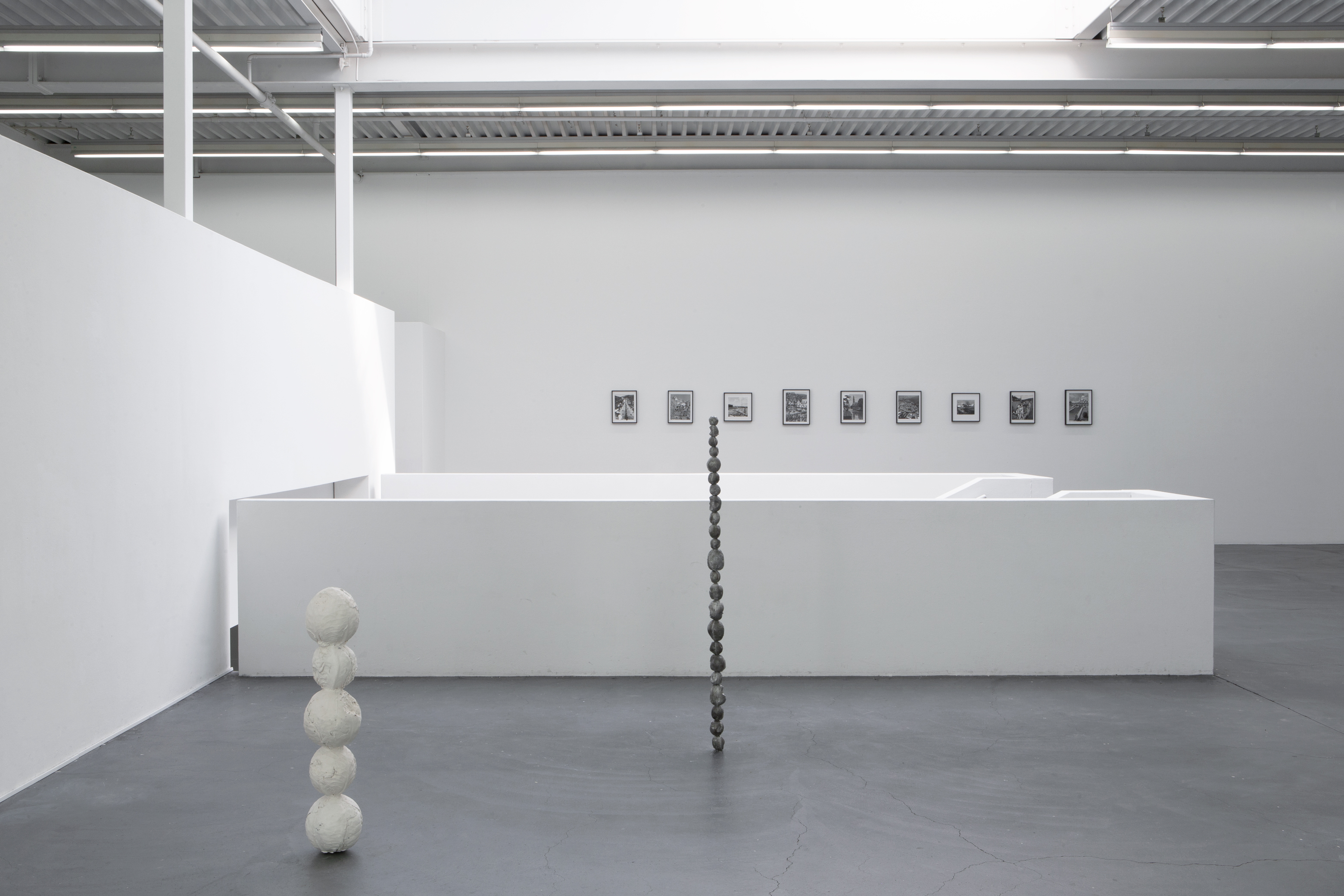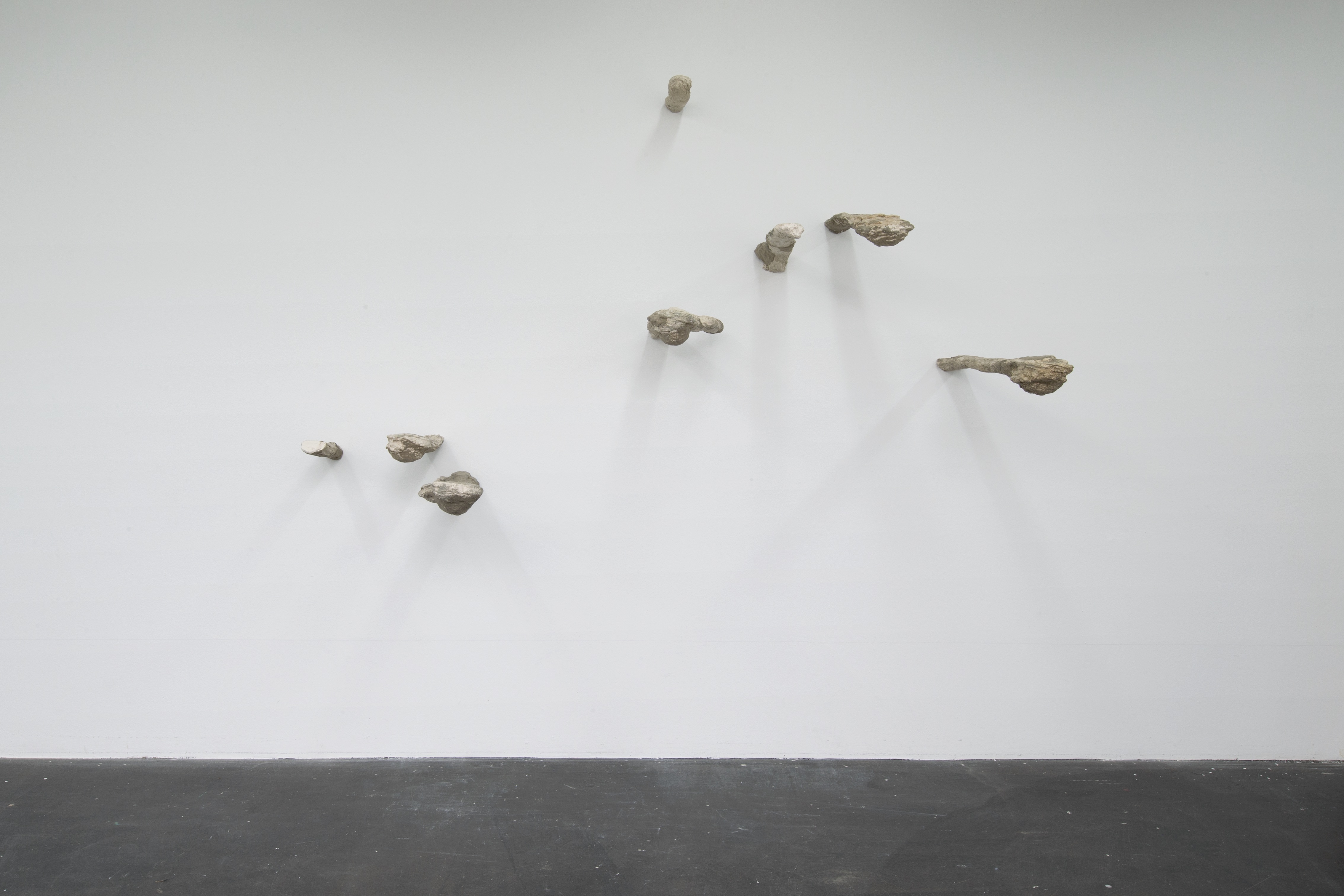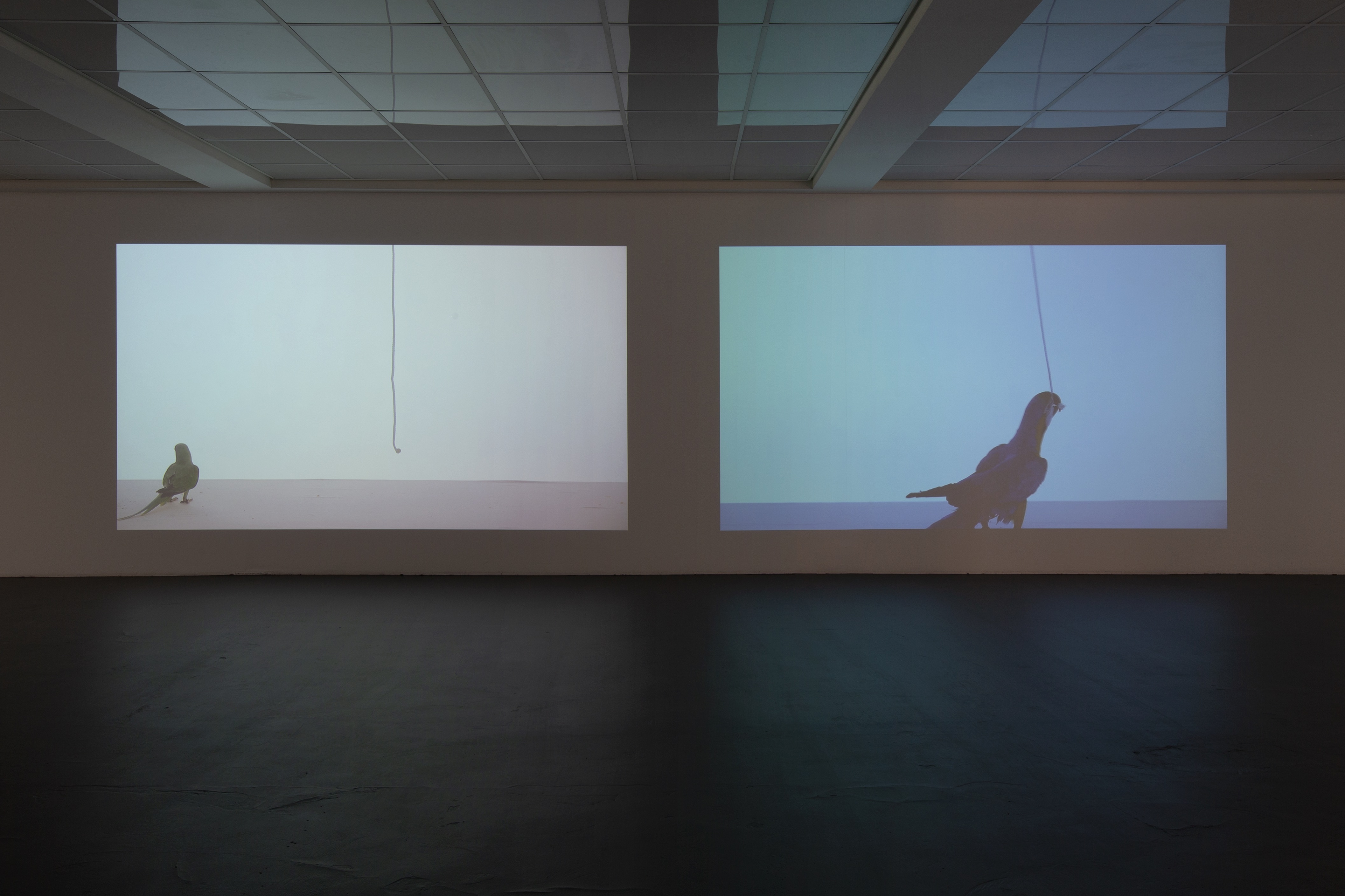Björn Braun
17.5. —
7.7.2019





Artist Björn Braun (b. 1979, Berlin, lives in Berlin), has long engaged with the question of how much the artist alone controls and completes creative processes and what potential there might be to transform this. Embracing the accidental and the uncontrolled, as well as an approach that enters into a poetic and creative dialogue with nature, Braun creates immersive objects and collages as well as video installations that reflect his open attitude. For this he draws from materials such as industrially produced fabrics as much as he does from materials he finds in nature or which are produced by nature. This very potential to transform raw materials into novel, poetic and sometimes mysteriously and equally humorous form, which continually challenges the truth in the creation of works, are topics which engage Braun on an ongoing basis. This is Björn Braun’s first major presentation in Switzerland.
Outlining the Multiple Dimensions of Sculpture. Björn Braun in Conversation with Ines Goldbach
IG: I’d like to start our conversation with two concepts: of the defect and of reversal. Let’s first of all consider your collages, which you’ve realised repeatedly over several years, a large number of which we’re showing here in the exhibition. They are mostly black and white photographs from the 1950s or ‘60s, which show urban or natural spaces. It’s only on a second glance that it becomes evident how you have intervened in these illustrations – that the few parts that are missing have been added back elsewhere. It is subtly irritating, poetic and humorous too, for city views are renovated, trees become paths, branches become ladders – is this a means of working small, yet making large, liberal formal gestures without having to manipulate much material?
BB: Yes, that’s true. I started the collages a few years ago and one of my reasons was that I did not have much money, but still wanted to work in a sculptural manner. My original idea was to prepare a kind of ‘sketch’, or a plan for very large sculptures. The collages allowed me, with little money and within a reasonable amount of time, to see if my ideas could stand up to space. As the work continued this thought, and the idea of verification, became ever more incidental and a work developed that stands alone.
IG: Central in your work is the relationship between nature and civilization — or perhaps instead how they co-exist and affect each other. Is this relevant in the collages too?
BB: I think so. Yes. Yet all the same I try to remain open each time I find a photograph that formally and conceptually interest me, and to respond to that specifically, even if sometimes it might take me in quite another direction.
IG: Getting ‘stuck in’ to photography with knife and scissors can have a destructive facet — yet your collages never lack a poetic impression. How is it with large-format works such as Italien rostiger Regen (Italy rusty rain). It’s a work that sounds poetic too from the title, for which you again accept a loss of something in order to realise something new. Can you tell me more about this work series in relation to how you make it, but also how it is in two parts?
BB: The idea for the work series actually came to me from reading a book in which landscapes were described in extraordinarily detail, almost fussily so. Afterwards I shredded the book and worked it into a mass that I applied to a canvas and put on a stretcher, with the idea that all those detailed descriptions of landscapes, the information that had previously been there, had to be on the image ground, but now no longer as a linear description but as a kind of contemporaneity. Yet somehow it seemed to not look enough like a landscape for me. I therefore decided to combine two shredded books on one canvas, separately. The lower part consists of a book with a title that has to do with the earth, the upper section’s title relates to the sky. Where the two ‘books’ meet, a horizon forms. I developed a series of these. Depending on the size and thickness of the books this horizon and the picture’s format shifts. The colouring and haptic qualities of the individual image halves results from the given colour or tone of the book’s cover, or the age and condition of a particular book.
IG: Even though this series initially reminds one of classical panel painting, they also gain a highly sculptural quality thanks to the rough surface. Would you agree?
BB: Definitely. The surface and the materials are of great interest to me, and the haptic qualities that emerge from these too. All that cannot be planned in my work aside, it’s nonetheless very important to me that I am happy with the materiality of the end result. It should make sense to me as a sculptural arrangement.
IG: We talked previously about defects, which to me remain a far stretch from the artistic gesture that you use, and which I would call a reversal. A good example of this are the Uferschwalbengänge (Bank Swallow Paths). It’s not only that you make something visible in a cast which would otherwise be unseen in the surface, but that there seems equally to be a recognition of design prowess within nature — in this case by birds — which is the basis of your work. Can you tell me more about this?
BB: These are bank swallows’ burrows. They are part of these birds’ mating behaviour. Bank swallows dig these cave-like burrows in sand cliffs and brood their chicks inside them. When they move south before winter, they leave the burrows. I was interested in these abandoned, hollow forms. You can clearly recognise the marks of how these hollows were dug and formed from the casts, which fascinated me, particularly because of their variation. I found they have a very sculptural form. Somehow, I would consider none of the casts unsuccessful, for they were dug in this particular form for a good reason. I also like the thought that these birds have designed something and you could say that they, in retrospect, have taken the aesthetic decisions, the work and the doubt too away from me.
IG: That brings me to my next question regarding the mobiles, your ground work Balztanz (Courtship Dance), your video works or equally the various elements that altogether narrate a form of sculptural dialogue with nature — you incite creatures like birds, donkeys or bees and worms to react to what you offer them. They eat into vegetables, work a light or walk over surfaces. A number of works have emerged from this unusual dialogue – are you interested in that which you cannot predict or plan? It seems to me that with these you are also calling the notion of the genius artist into question.
BB: Yes, I’m interested in what cannot be planned. Through this combination, perhaps better described as a dialogue with, for example animals, I try to initiate artistic decisions, no matter how small they might be, which I accept as part of the collaboration or lead to steps or results that I, in turn, can respond to. These decisions are key — I always have the feeling that there are so unbelievably many possible ways of doing something, to continue something in one direction or in another. Much is so relative, so I try to place myself in a position in which, in a way, certain decisions have been pre-empted. I also find the concept of developing and designing something with animals very romantic. I like the idea of an element of nature and thus of being part of nature too.
IG: With this strategy you describe, and being open and allowing what comes, I can imagine that failure has a fixed importance within the work. How do you deal with it?
BB: Naturally failure plays a major part in my work, yes. On one hand I’m fascinated by it. It also has something very poetic about it, and, indeed, something that cannot be foreseen. On the other hand, it is taxing and sometimes irritating.
IG: With your approach a concept of what an artist is — one who brings everything into being alone — qualified, furthering instead the idea of cooperation, be that with artist colleagues or with other living species. One could think that you, in a delightful way, take yourself less seriously in so doing?
BB: Perhaps. All in all I try not to take myself so seriously, perhaps also because everything is a little easier that way and less complicated — and more fun of course.
Björn Braun (b. 1979 in Berlin) lives and works in Berlin. 2002-2007 Staatliche Akademie der Bildenden Künste, Meuser class. Has won several prizes and awards, among others: 2016 Ludwig Gies Prize for sculpture from the LETTER Stiftung, Cologne; 2015 Cite work fellowship, Paris; 2013 Ars Viva Prize 13/14, Kulturkreis der deutschen Wirtschaft, Berlin; Kunstfonds Bonn, work fellowship; 2011 Stipendium Kunststiftung Baden- Württemberg. Various solo and group exhibitions nationally and internationally: 2018 RADICETERNA // Manifesta12, Calidarium of the Botanical Garden, Palermo; 2016/2012/2010/2007 Meyer Riegger, Berlin; 2015 New Towns, Marianne Boesky Gallery, New York; 2012 Frischzelle_16, Kunstmuseum Stuttgart, Stuttgart; and 2011 Soltanto un quadro al massimo, Villa Massimo, Rome